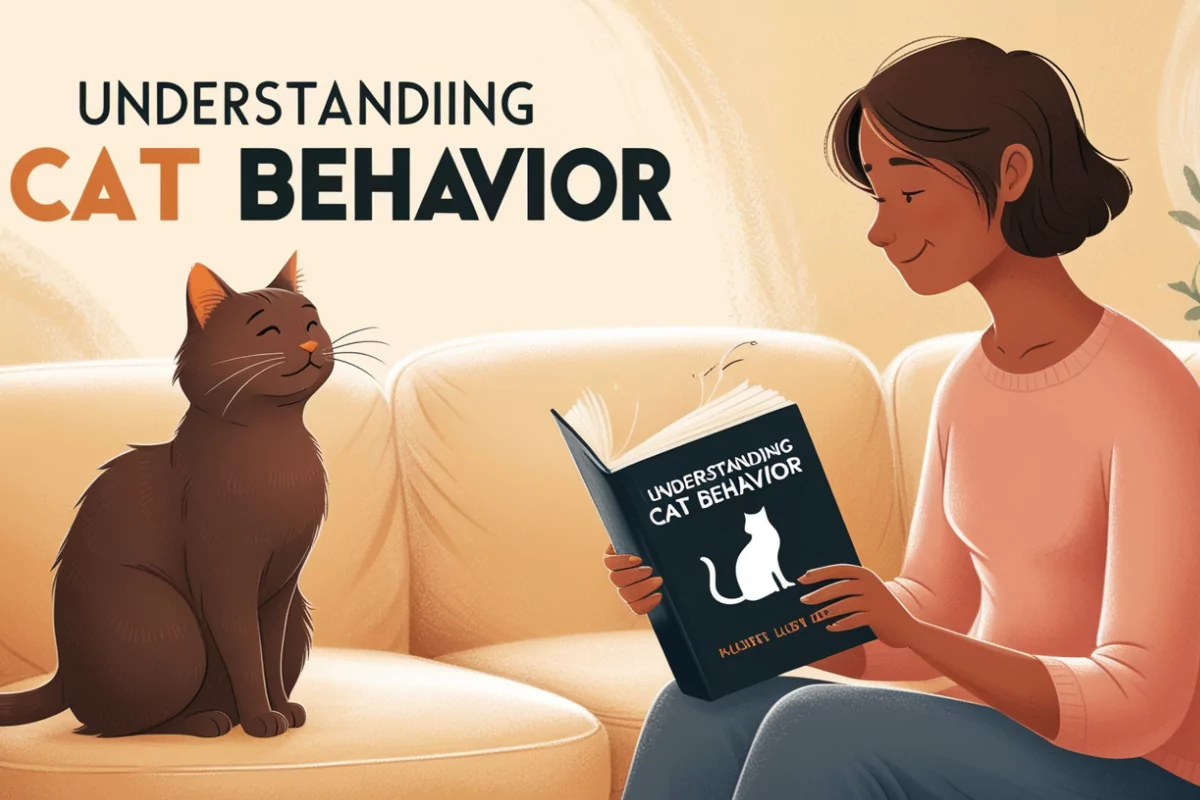Hello people! Do you know how to train your cat and what guide? Over the centuries, the hilarious little creatures have come to be known as mysterious, gorgeous in independence, and loving in their affections. Since then, knowing how cats think and act makes it easier to keep a good relationship with them.
This is because we want this guide to explain what common cat behaviors are, what things your cat shouldn’t do, and how to train your cat so it does what you want while still communicating with your cat as your cat.
Let’s discuss it!
Table of Contents
The Nature of Cats

The natural cat, the wild ancestor of cats, has lived in any environment. Many things in their lives are dictated by instinctual behavior. Dogs are pack animals, but cats are natural loners and explorers. This inherent nature, however, is the only thing available to interpret their actions and training.
Body Language: The Key to Communication

Cats communicate most (if not all) through their body language. If you can identify these signals, you are further away from your cat and from reinforcing or growing the bond. Here are some common signs to look for:
Tail Position
An upright tail, though high, generally means happy and confident. The tail could sometimes be low or up-puff, depending on fear or aggression.
A slow twitching cat’s tail suggests she is excited or agitated.
Ears
Curious, eyes forward, ears.
It meant he was fearful, in denial, or an aggressive mood.
Eyes
This means that you like and trust the person you’re with if you give them a slow blink. Slowly blink back at your cat.
Stare a bit as a threat but then squint, meaning you’re relaxed.
Vocalizations
It will meow in high or low pitch; some are hungry, some want to care, and some are angry.
When the cat purrs, it’s happy, but also means she’s in pain.
Common Behavioral Traits
And if you know typical cat behavior, you’ll know when your cat may need something from you and what it needs.
Playfulness: Playing animals, such as cats, of course, are also partial to mock hunting. Giving birds toys that exercise a hunting instinct and physical exercise, such as feather wands and laser pointers, will make the birds happy.
Scratching: When cats scratch, they usually fulfill their claws or carmaker territory. Give them different scratching posts before you have to scratch your furniture in time.
Hiding: The normal sign of needing security is hiding. Perhaps your cat lives in some corner, and they haven’t talked with anyone for a while; they may just need a little alone time.
Grooming: Self-grooming keeps the cat’s coat clean and controls the body temperature, which is why cats spend too much time grooming themselves. Excessive or different from usual grooming are signs of stress or health problems; alterations in grooming behavior should be carefully watched.
Socialization: There are solitary cats, but only partially, as most prefer to be social. The amount of sociability differs among individual cats, from loving another’s company, another cat and human, to living almost totally on one’s own.
Training Cats: A Gentle Approach
It’s difficult but also a lot of fun to train a cat. Dogs accept the command, while cats don’t. Here are some strategies for effective training:
Clicker Training
If you have a clicker (a small device that produces sound when pressed), use one. Telling them when they do it right and when the ‘spot’ is a good shot can help them understand when you want it.
Setting Boundaries
It would be good for said cats to have clear boundaries. For instance, consider keeping your cat from jumping on your counter. All you need to do is figure out a way to redirect your cat’s focus to a zone with a soft bed or a cat tree where your cat should lie down instead. However, consistency is key; as long as you never scold them but redirect them, they learn quickly.
Patience and Timing
Teaching a cat is a challenging exercise. Cats are too dumb to pay attention, so keep training sessions short and sweet. To keep them interested, 5 – 10 minute sessions a few times a day should maintain their interest.
Socialization and Exposure
Exposing your cat gradually to different environments, sounds, and experiences can make your cat more adaptable. Introduce them at your own pace to different spaces in your home, other pets, etc. (and) or gentle visitors.
Addressing Behavioral Issues
Your pet could have many behavioral problems: stress, boredom, or health problems. Here are some common issues and how to address them:
Litter Box Problems
Something that would be a huge one is if your cat suddenly stops using their litter box, which should be taken as a sign that something is amiss or their stress is too great. It’s important to keep the litterbox clean, where it is quiet and easy to reach. If it doesn’t get better, take the dog to the veterinarian to see if there’s no underlying medical thing.
Aggression
Fear triggers aggression or a disagreement over territorial control. However, physical punishment won’t help if your cat is aggressive and will probably just be in the situation. If it is not, then you need to figure out the cat’s triggers and slowly desensitize them to those kinds of situations. Carting can also help to alleviate anxiety, but having a space for your cat to retreat to can also help.
Excessive Vocalization
Vocal cats may be no more than other cats, but if a cat suddenly becomes more vocal than normal, it may be because it is in discomfort or requires attention. Pay attention to their cues, and if the vocalization is strange, bring them to the vet for a checkup for any hidden health issues because sometimes it’s just the useless noise of an otherwise perfectly healthy animal.
Destructive Behavior
Anxious or bored cats may take destructive bites or scratches. Give them lots of toys and games that keep their minds stimulated and lots of good play time with you. They can also be challenged and tied over boredom with puzzle feeders and treat dispensing toys.
Making the Home Cat-Friendly
Suppose you have a cat (or several cats) and care about their behavior and overall well-being. In that case, you must ensure they are in a comfortable and stimulating environment.
Here are some tips to enhance your home for your feline friend:
Vertical Space: Cats love to climb and perch. Cat trees or shelves of different levels can be given to them.
Interactive Toys: Toys that encourage your cat to behave as though they’re hunting, such as feather toys, ball toys that crinkle, and toys that use a laser pointer.
Safe Hiding Spots: Any cat will find comfort hiding away in these cozy spaces, but it’s especially useful for cats who get stressed, anxious, or fearful. Put boxes out for the next best thing and get a cat bed or tunnel.
Window Perches: Cats like watching things outside in the ‘real’ world. Installing a perch will also provide entertainment and enrichment.
Consistent Routine: Cats thrive on routine. Try to feed your cat, play, and interact with it simultaneously daily.
The following video explains about Making the Home Cat-Friendly:
Building a Bond with Your Cat
Becoming best buds with your cat is tough and doesn’t happen overnight. Here are some tips to deepen your connection:
Respect Their Space
However, cats own the word about the environment. Stop forcing your cat to take affection – let her come to you instead. Part of where it creates trust and comfort is here.
Quality Time
You can play with your cat or groom or just sit together. They strengthen your bond while offering each other emotional support.
Slow Introduction to New Experiences
If it’s a new house or a new pet that you have to introduce, do it slowly. When you get home, let your cat adjust and give it plenty of reassurance.
Observe and Adapt
Just notice what your cat loves, and you’ll adapt how you conceive and interact with them. They might even be more into receiving a gentle PA or prefer it if you wrestle with them.
Conclusion
Knowing how your cat operates is the first step to a happy and fulfilled cat relationship. These dogs don’t trust good training, body language learning, or enrichment, which all amount to an enriched and strong bond with you.
The thing about each cat is they are all different and will take time to figure out what, how, and how much and eventually what quirks. But be warned, should you be a fool and fail to see that well-trodden road to learn to know your cat, the reward is forever.
FAQ
1. And, suddenly, what’s my cat doing?
Stress, physical health, or changes in the environment’s demands can predispose individuals to several things that would cause changes in their behavior. A veterinary exam should be performed if your cat seems distressed or has undergone a dramatic shift in behavior.
2. How can I tell my cat is happy?
Happy signs in cats include a relaxed body (especially everywhere the body is not in use) combined with potentially a high tail, slow blinking, purring, and playfulness. Cats that allow you to keep them company and to play with you are content.
3. How do I train my cat?
The most effective way is by positively reinforcing (or encouraging yourself). The conditioning rules are to reward desirable behaviors with treats, praise, or playtime. Training sessions should be brief (5 – 10 minutes) and regular.
4. Why did my cat scratch furniture?
Scratching is a natural for cat behavior since the claws must be kept sharp and territory marked. It’s easy to redirect this behavior away from furniture by giving them cat-scratching posts and other options.




